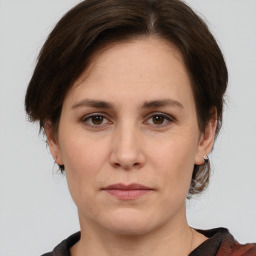Operations management is concerned with the activities related to the decision making and responsibilities of managing the resources which are used in the organization for the purpose of manufacturing of goods for the customers. Also the Operations manager is the person who is responsible for controlling and managing the resources that are involved in the operational activities (Mahadevan, 2010).
It is depend upon the type of sector, profile and designation of the person can be changed. Such as, if we are considering “Furniture Village†of UK, the titles can be assigned as “fleet manager†in a distribution channel (Leseure, 2010) or a “store manager†in stores.
The operational activities help in fulfilling customer needs and wants through the production and delivery of products or services. Operation management plays strategic role in any company because all the key functions are dependent on the operations functions. It plays a vital role, also essential for the management of the organization.
You Share Your Assignment Ideas
We write it for you!
Most Affordable Assignment Service
Any Subject, Any Format, Any Deadline
Order Now View Samples
TASK 1
1.1 An explanation on why operations management is important for organization
The role of operations management is to the design, control and monitor the process of transformation which refers to the conversion of raw materials and the inputs into final goods and services. In “Furniture Village†there are so many processes related to the operations and production function of the company (Heizer and Render) such as Design of the furniture (operation), conversion of raw wood into the final furniture, stores function, proper warehousing of wood(To keep it safe from moisture), and so on. These are the functions which are related to the operations part.
Basically Operations management plays a important role that operations management is the part of their business. The important role that this function is very essential for improving the performance of business (Rovai, 2010) it is the value chain process which means the whole series of organizational process and also adds the value in each function and in the beginning with the processing of the raw materials and ending with finished product with added value in it.
There are many functions which involves in in business. It includes both the services and manufacturing. It is important for managing the productivity in effective and efficient way and this will lead to enhancement in business performance and help employees is receiving high wages as well as lead to increase in company’s profit. It is also important in this competitive environment.
Operation is the key business function which is concerned with the transformation of inputs into outputs by adding value to the final product in the organization. The Effective operations management adds value to the business by increasing productivity, reduction of the costs and improving quality. This helps to achieve a strategic Competitive advantage (Nemery and et. al, 2012) through lowering the cost and differentiated goods. The business can able to offer better quality needs of customers at a competitive price. It is used to fulfill the various operation in the effective and efficient way for long term as well as short term. (Hashim and et. al., 2012).
1.2 Analysis of the operations functions of a selected organization
As a Leading Furniture Organization “Furniture village†developed a plan to design various functions of their functions running in the organization. Therefore in future, it should design a system that is capable of producing quality services and goods. It should select a time frame necessary to meet the business obligations. The designing of the functions should be like that:
Designing the system should be begins with product development strategy. Furniture’s design determines a single product’s cost and quality, as well as its features and its performance. In current scenario, design model such as Design for manufacturing and assembly (DFMA) have been implemented to improve product quality and lowering the cost (Crumpton, 2013).
Process Design: It describes the procedure for the design of the product to be made. The process design decision has different constituents which are based on Technical (Engineering) and non technical part. It includes the functions related to designing of the processes used for furniture making. Such as Crafting, Finishing and various workshops related to Carpentry shop (Mayo, 2011) and fitting shop.
- A technical component includes selection of the equipments and selecting a sequence for the phases relates to the operations.
- The scaled economy or Business component includes applying the proper amount of mechanization to make organization work force more productive.
Facility Design: It includes determining the capacity, location and layout for the production facility. Capacity (Hailu, Jeffrey and Goddard, 2007) focuses on the type of quality and performance of product as per the desire by customers.
There are some more business functions which have interdependence with these described key functions.
1.3 Evaluation, by using a process model, of the operations management of “Furniture villageâ€
The Transformation model: It focuses on the debelopment of products required by the customers “Furniture village†for its customers (Lawrence and et. Al, 2013). This model introduces the transformation process (Zhao and Develtere, 2010) for analyzing operations.
There are three components of operation such as inputs, transformation and outputs. Operations management involves systematic direction and control on processes. Also transform resources into finished Furniture for the customers and clients.
Inputs: Some resources which are used in the process of creating goods and services, other plays role as the components part in the creation process but are not used in main process (Keramidou and et. al, 2013). Like wood, metals, these are used in manufacturing but oil, paints, these are not used as the parent material but they are also crucial for the manufacturing processes.
Transformed resources: those resources that are transformed in some way by the operation to produce the furniture. Example is wood and metals.
Transformation resources: Those resources that are used to perform the transformation. Such as oils, paints and lath machine.
Resources are of three types:
Materials: wood, paints, metals, rods, hammer.
Information: that is being processed forward and backward direction.
Customers: People who are transformed in some way.
Outputs: The principal outputs of “Furniture Village†are firstly the wooden furniture, waste materials and the reprocessing product (Malhotra, 2012). Many transformation processes produce both services and goods in plants. Transformation process always results in some undesirable outputs. An important aspect of operations management in this organization is minimization the environmental impacts.
Transformation processes: It includes the process of input which are specified in the first stage (Hopp and Lovejoy, 2012) and add value to the final product.
TASK 2
2.1 An explanation of the three “Es†(Economy, efficiency and effectiveness)
The principal of three E’s is considered as the basis of performance monitoring in public administration. In companies such as “Furniture villageâ€, when considering all the aspects of economy, efficiency and effectiveness (Norris, 2007), it is essential to proceed comprehensively.
In assessing the effectiveness it is necessary to evaluate the economy or efficiency of the given process. These are described in details as follows:
Economy: Procurement of the inputs at the right time, at right place and in right amount.
- Right time: to acquire a resources at the right feasible time to fulfill the need. The resources should be available to satisfy the need of the customers when it is required.
- Right Place: the resources should be available where they are needed.
- Right cost: It refers to the lowest cost in the life cycle of a resource. the lowest cost could be determined in the following manner, firstly Capital cost than comes Operating cost, Maintenance cost, Downtime cost and lastly Salvage value.
Efficiency: Efficiency (Curran and et. al, 2012) is a concept of finding the standard of input to the output. But in large firm like “Furniture village†the benchmark are not available and the auditor has to work with a audited management to determine standards. Some of the commonly used technique for finding efficiency are:
- Inter authority comparison
- Internal comparison
- Private sector comparison
- Past performance
- Targets
- productivity
Effectiveness: Effectiveness is determined as the type of outcome is achieved after the process. It also ensures about the accomplishment of targets. According to the standard (Lai, 2008). It also evaluates that work is completed in better manner in the pre decided time.
2.2 assess the impact of the tension between cost minimization and quality maximization
Operations function can be divide according to the various department of the company “Furniture villageâ€. It also facilitates to allot th ranks and asses the quality of information and also concern the cost and quality (Keupp, 2007). This method was also used for analysis of cost-effectiveness. This involves dividing the departmental effect for costs with the departmental effect for the quality measure for each department in the organization.
How could we solve the cost Minimization and quality maximization problem?
In principal, everything we want to know about competitive firms can be derived from profit maximization. This can be solved by considering the factors such as:
Factor demand
Firm supply (Johnston and Clark)
Adding over all firms in the economy, market factors demands and supply of goods and combining with the demand for goods and supply factors, which come from either exogenous resources constraints or by adding over demands and supplies from standard consumer?
Again, the cost minimization problem, is the same regardless the market is competitive of the company “Furniture Villageâ€. The firm is monopolistic or if there is some intermediate situation with imperfect competition into the market. This comparison of different market forms.
2.3 Evaluate the significance of the five performance objectives
Impact of the operation management is divided into major five categories of the stakeholders in “Furniture Villageâ€. Stakeholders who are affected by these objectives are:
- Customers: These are the most obvious people who will affect by any business performance.
- Suppliers: Operations can have a major impact on suppliers, in both intake and outgoing function.
- Shareholders: Cleary, the better an operation performance the more likely the whole business.
- Employees: performance of company will also be improve
- Society: It does not have any direct connection in terms of economy, groups of the people and individual person of the society suffer from this impact.
Objectives are detailed below
- Quality: One of the important function because whole performance of the company is dependent on the quality factor. Quality is defined in the term of “conformance†to the objective. That is the most basic definition of quality.
- Speed: It depicts about “speed of response†of operations. It defines the time between an internal or external customers wants the type of goods as they are getting their customized product.
- Dependability: This depicts about “being on timeâ€. Customers receive their products on time. How the company is efficient about the supply of requested product.
- Cost: there are two important points in cost. First the cost structure of different organization and secondly, the most important, the other four performance objectives all contribute.
- Flexibility: Flexibility is the most complex objective of operation management. Flexibility means change the way of operation which improve the productivity of the organization.
TASK 3
3.1 Asses how linear programming adds value to a given production process
Linear programming problem is the mathematical tool which is used to determine the appropriate solution to a specific problem related to production part of “furniture Village†company. It is used to find the relation between the less cost and optimum utilization of resources which are essential to produce the output and this output should be matched with the desired output by cost minimization. This tool is also used to solve the inventory levels and least cost methods of the transportation etc.
Mathematical programming helps to minimize the cost of the company and also increases the profits of the business.
Linear programming is one of the important function and it solves the most basic problem for optimization. This will provide a quick review of linear programming. there are many methods used for the optimization purpose example of such methods are, Graphical method. This the easiest method used for addition value to the process by optimization of the resources.
3.2 Evaluate critical path analysis and network planning
An important starting point is to set the objective of the company “furniture village†so that we can find out where we are going. Key objectives of the CPP and network planning are as follows and does no requirement and maintenance and also eliminates the risk of structural problem.
The critical success factor for the network planning are to deliver the project within a given budget of the company, To have no accidents or incidents during manufacturing, to establish good relationships with the community and to respect the local environment issues and to ensure the efficient procurement of the resources.
In very basic explanation critical path method is the tool used to plan activities so that a job can be completed in the shortest time. It breaks down into a number of tasks and looks at the dependency of different operations. CPM basically consists of an activity and Node. Activity requires time and resources.
3.3 Justify the need for operations planning and control in the selected production process
Production planning and control can facilitate the company “Furniture village†in the following ways, Optimal utilization of capacity: with the help of production planning and control the company could schedule their task and production runs and thereby ensure that their productive capacity does not remain idle and there is no undue queuing up of tasks via proper allocation of tasks to the production facilities. No order goes unattended and no machine remains idle. Inventory control: Proper PPC will help the company to resort to just-in-time system and thereby reduce the overall inventory. It will enable the company to ensure the right supplies at the right time. Economy in production time: PPC will help the company to reduce the cycle time and increase the turnover via proper scheduling. Ensure quality: A good PPC will provide for adherence to the quality standards so that quality of output is ensured at the specific given time.
PPC is one of the important factor for the business “Furniture village†in capacity utilization and inventory control.
CONCLUSION
Operations Management is the base for many key operations in “Furniture villageâ€. It controls the whole process started from stores and purchase to satisfying customers with value adding. There is lots of scope for the development in this field. It controls the basic functions like, stores, warehouse, process layout and product designing and modification with key operations like research and development, human resource, and IT. In current scenario operations management is the basic need of any company.
REFERANCES
- Crumpton. A. M., 2013. Building operational efficiencies. The Bottom Line.
- Curran, R. and et. al, 2012. Air Transport and Operations: Proceedings of the Third International Air Transport and Operations Symposium. IOS Press.
- Hailu. G., Jeffrey. R. S. and Goddard. W. E., 2007. Capital structure, firm size, and efficiency: the case of farm petroleum and animal feed coâ€ÂÂoperatives in Canada. Agricultural Finance Review.
- Hashim. J. and et. Al, 2012. Tax waiver year effect on earnings management practices in Malaysia. Journal of Financial Reporting and Accounting.
- Heizer. H. J. and Render. B., Operations Management. 11th ed. Pearson Education Limited.
Amazing Discount
UPTO55% OFF
Subscribe now for More
Exciting Offers + Freebies










